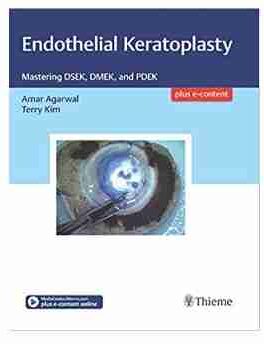Overview of Corneal Transplant Procedures:
Corneal transplant procedures, also known as corneal grafting or keratoplasty, involve the surgical replacement of a damaged or diseased cornea with a healthy cornea from a donor. These procedures are performed to improve vision, relieve pain, and restore the structural integrity of the cornea.
Understanding DSEK (Descemet’s Stripping Endothelial Keratoplasty): DSEK is a partial-thickness corneal transplant procedure that focuses on the innermost layer of the cornea, called the endothelium. In this procedure, the damaged endothelial layer is removed and replaced with a thin, healthy donor graft that includes both the endothelium and a thin layer of stroma. DSEK offers several benefits, including faster visual recovery, reduced risk of graft rejection, and improved stability of the cornea.
Knowing DMEK (Descemet’s Membrane Endothelial Keratoplasty): DMEK is a more advanced variation of endothelial keratoplasty that involves the transplantation of just the donor’s Descemet’s membrane and endothelium. This procedure offers the advantage of an even thinner graft, resulting in improved visual outcomes, reduced risk of graft rejection, and better preservation of the patient’s corneal anatomy.
PDEK (Pre-Descemet’s Endothelial Keratoplasty) Explained: PDEK is a newer technique that involves transplanting a thin layer of tissue consisting of both the Descemet’s membrane and endothelium, as well as an additional layer called the pre-Descemet’s layer. This technique aims to improve graft adherence and minimize graft detachment complications.
Pros and Cons of Each Procedure:
- DSEK:
- Pros: Faster visual recovery, reduced risk of graft rejection, improved corneal stability.
- Cons: Potential for uneven graft thickness, limited suitability for patients with extensive corneal scarring.
- DMEK:
- Pros: Excellent visual outcomes, reduced risk of graft rejection, better preservation of the patient’s corneal anatomy.
- Cons: More technically challenging procedure, increased risk of graft detachment.
- PDEK:
- Pros: Improved graft adherence, potentially better outcomes in complex cases.
- Cons: Limited long-term data, increased surgical complexity compared to DSEK.
Comparative Analysis:
The choice of procedure depends on various factors, including the patient’s specific corneal condition, surgeon expertise, and patient preferences. DSEK is a reliable option with proven outcomes, especially for patients with corneal edema or Fuchs’ endothelial dystrophy. DMEK offers superior visual outcomes but requires more surgical skill. PDEK may be considered in cases with more challenging conditions or a higher risk of graft detachment.
Conclusion:
Choosing the right corneal transplant procedure requires a thorough evaluation of the patient’s individual circumstances and consideration of the benefits and limitations of each technique. Collaborating with a skilled corneal surgeon and discussing the available options can help determine the most appropriate procedure to achieve optimal visual outcomes and restore corneal health.

Disclaimer:
This site complies with DMCA Digital Copyright Laws. Please bear in mind that we do not own copyrights to this book/software. We’re sharing this with our audience ONLY for educational purposes and we highly encourage our visitors to purchase the original licensed software/Books. If someone with copyrights wants us to remove this software/Book, please contact us. immediately.
